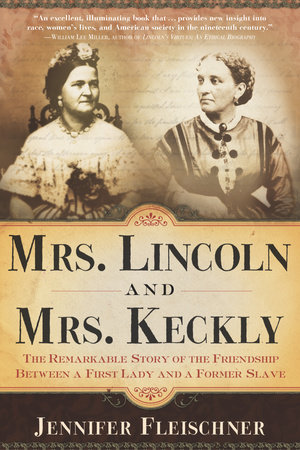Mrs. Lincoln and Mrs. Keckly Reader’s Guide
By Jennifer Fleischner


1. The story of Mary Lincoln and Elizabeth Keckly gives a view into the vexed and ambiguous relations between the races in antebellum and post-Civil War America. How were the lives of these women shaped from childhood through adulthood by the complexities of race relations? Do you think that Mary and Lizzy being women played a part in their ability to relate across the color line? Would you call their relationship a “friendship”?
2. One of the themes of the book is the development of Elizabeth Keckly’s sense of self. In what ways do you think being mixed-race affected her identity? How did her relationships to her family, white and black help and/or hurt her? How did relationships outside of her family help and/or hurt her? As a freed woman, how did she come to terms with her past?
3. How did Elizabeth Keckly cope with the traumas of enslavement? She claimed that slavery had its bright side as well as its dark side. How do you understand her point of view?
4. If we think about freedom as not only a legal, but also a psychological condition, what were the stages in Elizabeth Keckly’s becoming free? Do you think she ever became truly free? Do you think she was freer in some ways than Mary Lincoln?
5. Mary Lincoln inspired contradicting reactions in her contemporaries, while today people still argue over her character. Why did she inspire such conflicting reactions in her own time, as well as ours? Did your feelings about her change over the course of the book?
6. When Elizabeth Keckly arrived in Washington, she established herself in the local black middle class. What were your impressions of this community?
7. The author argues that Mary Lincoln and Elizabeth Keckly became closer as Mary Lincoln’s life deteriorated. Yet events in Lizzy’s life may have also contributed to their growing friendship. How did their relationship evolve? And how did the dynamic between the two women change over time?
8. Why do you think Elizabeth Keckly wrote her memoir, in which she revealed so much about Mary Lincoln’s recent private life? Was Mary Lincoln justified in feeling angry and betrayed?
9. Has reading this book changed your thinking about race and race relations in America?
10. Consider Mrs. Lincoln’s and Mrs. Keckly’s lives. Are there any parallels you can draw between the two women’s experiences from childhood onward?
Just for joining you’ll get personalized recommendations on your dashboard daily and features only for members.
Find Out More Join Now Sign In